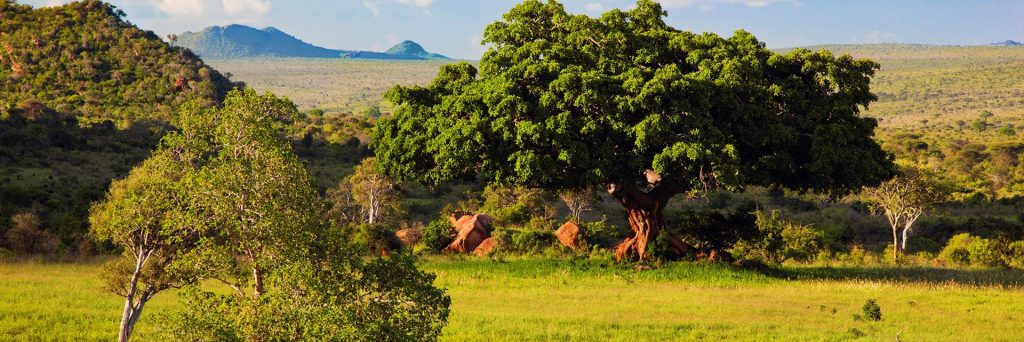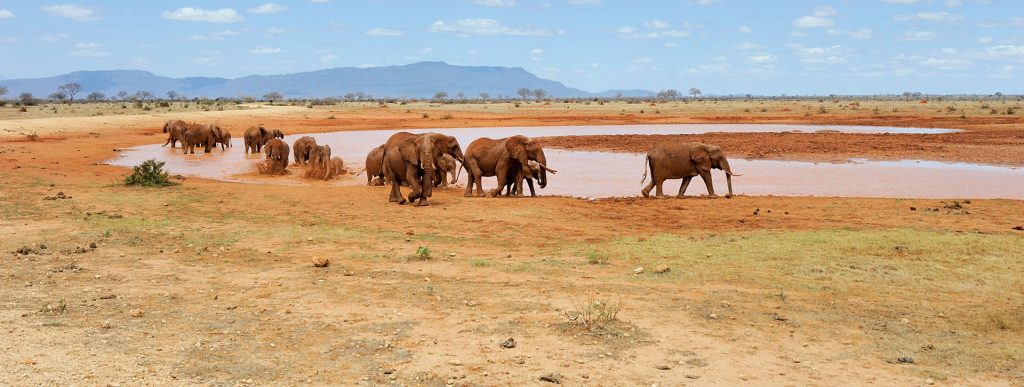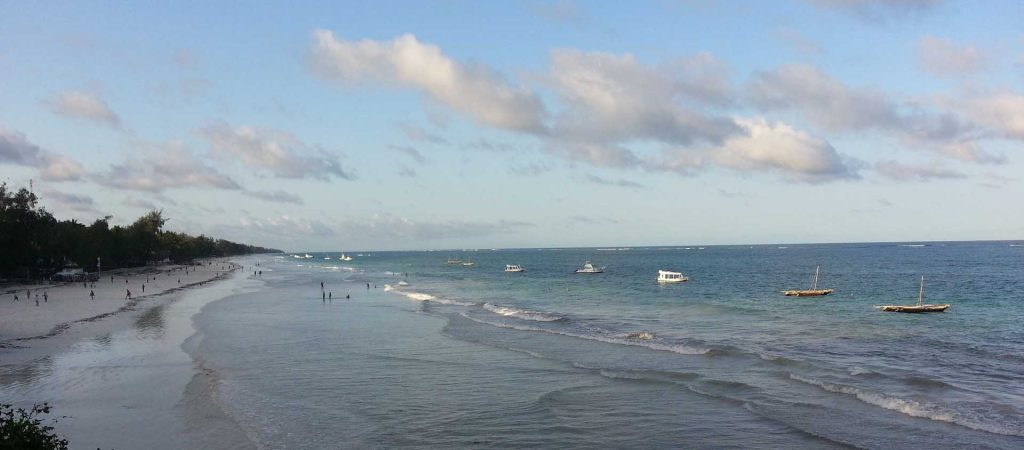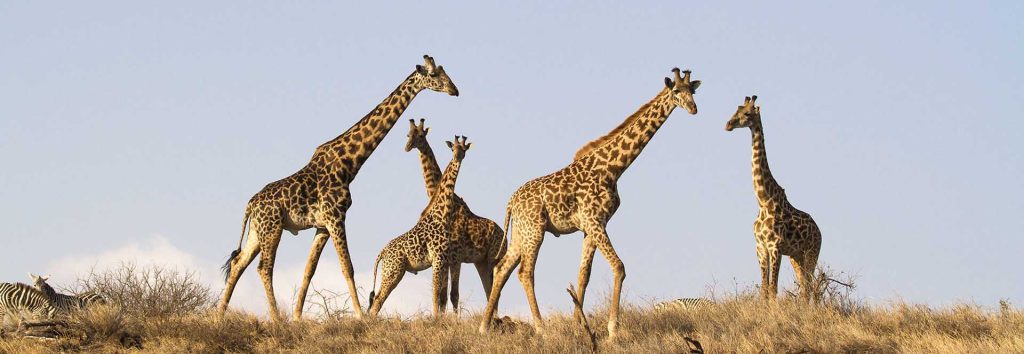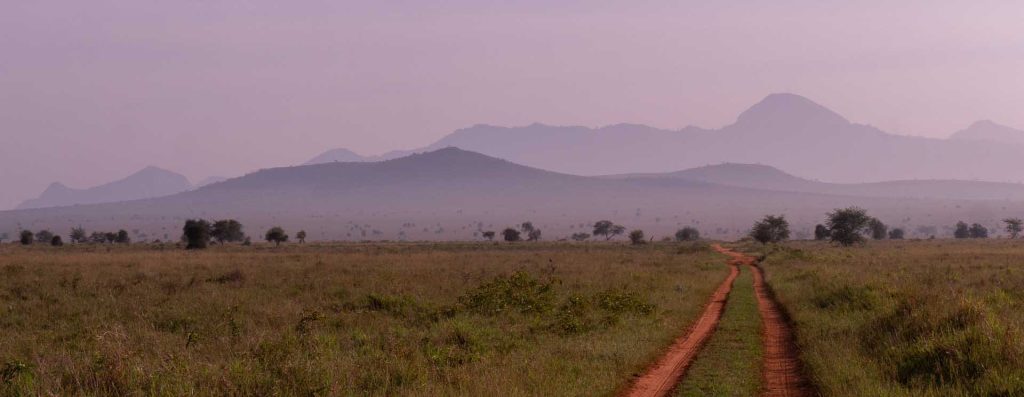Kenya Top Destinations
Masai Mara National Reserve
The Masai Mara National Reserve, also known as Masai Mara or The Mara, is located in the southern part of Kenya within the Great Rift Valley. Covering an area of approximately 1510 square kilometers (938 square miles), this unfenced savannah grassland is situated roughly 150 miles southeast of Nairobi. Its name is derived from the Maasai tribe, the indigenous people of Kenya, and the Mara River that flows through the park.
One of the main attractions of the Masai Mara is the famous wildebeest migration, where thousands of animals cross the Mara River between July and August. It is also home to a diverse range of wildlife, including the “Big Five” (elephants, lions, leopards, rhinos, and buffalo), zebras, antelope, gnus, Oribis, hyenas, giraffes, warthogs, gazelles, hartebeests, hippos, crocodiles, and many others. The park boasts the highest concentration of African lions, including the black-maned lion. Additionally, there is a rich birdlife with over 400 different bird species found in the Masai Mara.
The climate in the park is hot and dry, with two regular rainfall seasons throughout the year. The topography mainly consists of open savannah grassland, with clusters of acacia trees in the southeastern area. The Mara and Talek rivers add to the beauty of the rolling plains in the reserve. During the rainy season, numerous seasonal rivers appear, but they dry out once the rains cease. It is important to note that the Maasai Mara National Reserve is managed by the local county council of Narok district and not the Kenya Wildlife Service (KWS).
By road:
Located approximately 270 km away from Nairobi City, the journey to this destination can be completed in 4-5 hours by road or a mere 40-45 minutes by flight. The majority of the road offers a smooth driving experience, except for a stretch between Narok town and Sekenani Gate, which is a dirt road but still in decent condition. However, the alternative route passing through Lemek and Aitong town is quite rough and not recommended.By Air:
A trip to Maasai Mara from Nairobi typically lasts around 45 minutes. Numerous airlines offer flights on this route, but the most popular ones for domestic flights to Maasai Mara are Safarilink and Air Kenya. Flights to Maasai Mara are available from various locations, including Nairobi’s Wilson Airport, Samburu, Lamu, Malindi, Nanyuki, Mombasa, and Ukunda. If you are departing from coastal towns, the flight to the national reserve will take approximately 2 hours. In Maasai Mara, there are 8 airstrips available, namely Ngerende, Shikar, Musiara, Kichwa Tembo, Olkiombo, Serena, Siana, and Keekorok. It is possible that you may have a few stops along the way due to other passengers landing at one of the 6 airstrips in the Mara. However, there are also options for direct charters into the Masai Mara.The Masai Mara Game Reserve is renowned for its exceptional wildlife viewing opportunities in Africa. Throughout the year, visitors can partake in exhilarating game drives to explore the park. If you have a keen interest in spotting majestic big cats during your Kenyan safari, the Mara guarantees sightings. This reserve is home to all of the “Big Five” animals, including elephants, lions, leopards, rhinos, and buffalo. However, the population of black rhinos is critically endangered, with only 37 remaining as of 2000. The park is teeming with herds of plains zebras, Masai giraffes, common giraffes, jackals, white-bearded gnus, Oribis, warthogs, Thomson’s and Grant’s gazelles, hartebeests, hyenas, bat-eared foxes, rare Topi antelope, beautiful rone antelope, as well as hippos and crocodiles in the Mara River.
For the most pleasant weather conditions, it is recommended to visit the Masai Mara National Reserve between December and March, as well as July and October. These months offer ideal conditions for exploration. April through June are also suitable for a visit, although there may be occasional rainfall or cooler temperatures.
The vast Masai Mara reserve is situated at an elevation ranging from 4,875 to 7,052 feet above sea level, resulting in a humid climate and milder temperatures compared to the rest of Kenya. During the day, temperatures reach a maximum of 85°F (30°C), while at night they can drop to around 60°F (15°C). The majority of rainfall occurs between March and May, as well as during the short rainy season in November and December. Navigating the park can be challenging during these periods. From July to October, the weather is dry, the vegetation is abundant, and the daytime temperatures are pleasant, making it the ideal time to observe the park’s wildlife. This period also sees the highest number of tourists visiting the Masai Mara. The hottest temperatures occur in December and January, while June and July are the coolest months in the park.

